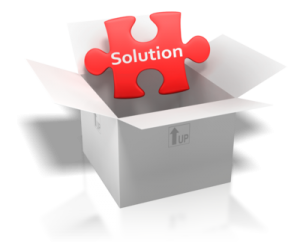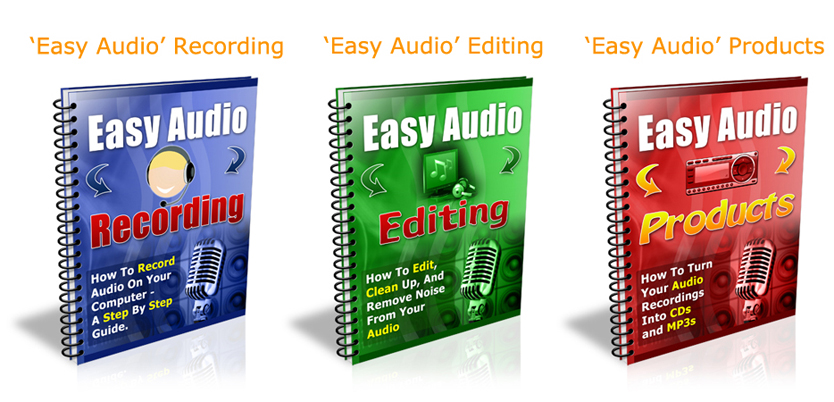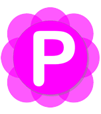Product Creation: the First Simple (and Too Often Overlooked) Step
 It can be really exciting to have a great idea about a new business, product or service you can provide to your clients or market, whatever niche you are in, especially if it’s something you think no one has done before and you have a feeling that it could be really successful.
It can be really exciting to have a great idea about a new business, product or service you can provide to your clients or market, whatever niche you are in, especially if it’s something you think no one has done before and you have a feeling that it could be really successful.
You may have great enthusiasm for your new project and find yourself pouring all your time, energy, money and resources into something that seems like a surefire winner.
Hundreds of hours… thousands of dollars (millions – it has happened)… into something that you ‘just know’ is going to sell…
And you may be right!
You may well have hit upon a formula for a product or service in exactly the way to market wants and needs right now and it could lead to great rewards and opportunities, financial and otherwise.
However…you may be wrong!
There is one thing that most people, even experienced business folk, often overlook in their naiveté and enthusiasm about bringing a new product or service to market… and that is the simple principle of having a good solid plan based on market research.
Missing out this vital step could be a very costly mistake!
And one that can be easily avoided…
How can you confidently know what products and services to create?
How can you be sure that your time, money and energy will be invested wisely in something that your clients, commnity or the market in general will want to buy?
There is a super easy solution…
Possibly the Simplest Business Plan Ever
A wise & very wealthy man (Keith Cunningham – the ‘ Rich Dad’ in Robert Kiyosaki’s famous best seller) once told me his very simple 3 step business plan:
- Find out what they want
- Go and get it
- Give it to them
Incredibly simple. Incredibly effective.
I have not yet found a simpler business plan that is more guaranteed to bring you success at any level, in any market and in any economy.
So if you are someone who wants to expand your income opportunities but just doesn’t know where to start or what product or service to provide … there is an incredibly simple first step.
Ask!
Simply ask your current clients, your future prospects or those in your community what they most need right now to answer their most burning questions and solve their biggest problems.
How do you do this?
The simplest solution is a survey, which can be done online, via e-mail, embedded in a website or pre-technology style – with a pen and paper!
The bottom line is that before you invest any time, energy, money or resources of any kind in any business venture at any level, do your research so that you can confidently go forwards knowing exactly what the market wants and then create your products and service to meet those exact needs.
Once you have identified a problem, you can then move towards providing a solution, which may be something as simple as a guidebook, video tutorial or audio training programme… which leads to the next step in the process.
How do you create your first simple product?
What is the next step after market research?
What simple audio or video equipment do you need, and how do you use it?
Well, the answers to those questions are here at SuperEasyAV…and on a series of Free videos I have created to help get you started.
This is also where I apply the principle I have just relayed to you – a simple survey.
Help me to help you grow your business with your very own audio and video products by telling me exactly what you want and need right now to get you to where you want to be.
In return for your time in completing this short survey I’ll send you 6 FREE Training Videos to get you started with audio & video today (plus a surprise Super Bonus for those who are quick!).
Click on this link to complete your survey.
– – – – – – – – – – – – – – – – – – – – – – – – – – – – – – – – – – – – – – – – – – – –
Turn Slideshows & Onscreen Demos into Products
A live presentation with a PowerPoint or Keynote slide show, or any kind of on-screen demonstration, can easily be turned into audio and video products by capturing the presentation ‘live’ on your laptop with screen capture software such as Camtasia (PC) or Screenflow (Mac) – free trial available for both.
Both of these simple to use recording programs allow you to capture onscreen demonstrations at the same time as recording your voice, which means that literally any kind of presentation could be turned into a product.
The basic idea is to do your presentation just as you normally would and at the same time simply clip a lapel microphone to your clothing, plug it into your laptop and use Camtasia (PC) or Screenflow (Mac) to record everything you say and do.
The recorded audio and video content can be edited and saved as mp3 (audio) and mp4 (video) files which can then be sold in various product formats:
– downloadable files
– streaming audio and video (e.g. in a membership site)
– CDs and DVDs
– podcasts
Here are some essential guidelines which are often overlooked, to keep this process simple and get the most out of your presentation.
Rule Number One:
Save often. This is for a number of reasons, and not just to save your work. Saving often in multiple files over different sessions allows you to break your content down into workable chunks for editing later.
It also puts less stress on your computer and reduces the likelihood of a crash.
Rule Number Two:
Label every file clearly. In fact the best way to organise recording your presentation is to do all the preparation well in advance. This means creating folders and ‘blank’ files (just as you would with templates for e-mails or other documents) so that on the day of your presentation you simply have to open up the blank document and record over it knowing that the file structure is already tested and In place.
Rule Number Three:
Make sure you have lots of disc space. Audio and especially video files recorded in a high quality produce a very large files. You may be recording several hours worth of material and the last thing you want to do is to run out of space!
Rule Number Four:
Close all unnecessary programmes, especially if you are demonstrating anything live on the Internet.
First of all, you want all your computer power focused on giving a smooth and trouble-free recording.
And secondly, you don’t want to be interrupted by random Skype calls or instant message bleeps in the middle of your recorded presentation.
Rule Number Five:
Only record as much screen space as you need. It is better to capture as little screen space as possible (which means smaller file sizes) if you don’t need to record the entire screen.
Rule Number Six
Make sure you do a few test captures on the day before you start to test that everything is working fine.
Do the following checks:
– Listen back to your audio to make sure you are capturing what you need, which could be just your voice from the lapel microphone you are wearing or it could also be any audio on any website you might visit during a demonstration
– Playback the video recording and see how smooth the recording is.
– Save the file with the correct file name and version in the appropriately named folder for easy reference later on.
Rule Number Seven
Get the maximum leverage from your presentation.
You will have several different elements from your presentation all of which can be turned into separate products or packaged together as a multimedia product. For example:
Audio products
– CDs
– streaming audio
– downloadable audio
Video products
– DVDs
– streaming video
– downloadable video
Text based products
– complete slideshow
– individual slides
– audio transcription
– e-book’s
– printed books
Think about all the different possible outcomes from just one presentation and how easy it is to get maximum return on time and energy simply by recording what you do.
Audio Recording on a Computer
The Complete Recording Studio in One Box!
Audio recording on a computer is without a doubt the most powerful and flexible way to record. Once you have learned the basics of recording on computer there is no going back!
And it is actually a lot easier than you think.
Many people just want to record their own voice at home on their own computer. To do this as a basic level, you will need two things
- a microphone or headset microphone (preferably with a USB connector for high quality sound)
- some sound recording and editing software
This will give you a reasonable to good-quality recording system (in my professional opinion – great quality to most other people!), depending on what microphone and connectors you choose to use.
To get really high-quality sound recording using a computer, you will need to invest in at least a studio quality condenser microphone and maybe an external USB soundcard, the most convenient way to upgrade to high quality digital recording.
As far as recording and editing software is concerned, there is a huge range to choose from. To save you the time, trouble and expense of trying to find suitable software, I recommend the versatile, powerful and easy-to-use programme I use every day for my own recording and editing work – ‘Audacity’.
‘Audacity’ is a simple, user-friendly, ‘multi platform’ (Windows, Mac and Linux) sound recording and editing package for everyone from the complete beginner to the experienced pro.
This is all you need to record and edit on your computer
- ‘Audacity’ recording and editing software
- a ‘tie clip’, ‘headset’ or ‘condenser’ microphone
- speakers or headphones to listen back to what you have recorded
Computer Housekeeping: ‘Where’s That *#%@* File?’ Keeping It All Organised!
A quick note on ‘computer housekeeping’!
What I mean by this is, please get into the habit of keeping your files on your computer in some sort of order, so you know where to find them.
We’ve all ‘lost’ files…documents…letters…photographs… on our computers because we just save them anywhere and don’t keep them organised.
I highly recommend that before you start any recording project (audio or video) that you create a folder to keep your data and files related to that project in one place.
This includes any software that you might use for your audio or video projects – keep it all in one folder.
That way you will always know where it is, and if you ever need to reinstall any of the you can go straight to that ‘Software’ folder and find it easily.
And if you get into the habit of doing this for your audio and video projects it makes them really easy to back up because you can drag the whole folder onto your backup disk, USB stick are external hard drive for safekeeping, knowing that every single file in your project is contained in that folder and that the project will always open with all files included and nothing missing.
For more on recording audio take a look at my “Easy Audio” ebook series.
Royalty Free Music for your Hypnosis, Meditation & Relaxation Products
It can be quite a challenge to find good music that you can legally use for any kind of media production:
- video music ‘beds’ (music to use under a voiceover) or backing tracks
- soothing, calm music for slideshows and screencast presentations
- music for audio recordings: hypnosis, relaxation and meditation CDs or mp3s
Thought Sounds is a large collection of soothing, high quality, royalty-free soundtracks designed from the ground up to be used with brainwave entrainment, hypnosis and relaxation.
Perfect for Hypnosis, Therapy and Meditation
It is rare to find soundtracks that can be used effectively for therapy and hypnosis. As any experienced hypnotherapist will tell you, backgrounds need to be both slow in tempo and consistent throughout the entire session. If they are too distracting, the impact of the hypnosis script and any other elements will be severely diminished. A soundtrack ideally suited for therapy is incredibly hard to accomplish without creating a boring, overly repetitive composition. As a result, therapists can spend years building up a collection of acceptable compositions that only a handful of clients actually enjoy.
Here is an overview of what is included:
70 soothing and thought-provoking soundtracks
- Warm, soothing ambience
- Ethnic inspired soundtracks (Indian, Celtic, Middle Eastern, Asian, etc)
- Weightlessness, Floating, Outer Space soundtracks
- Spiritual (choir, meditation, shamanic)
- “Primordial” Sounds
- Nature (rain, forest, etc) combined with ambient sound
- Unique Musical Tracks
66 soundtrack variations
In addition to the 70 main soundtracks, we have also included 66 variations. Variations are based on the main 70 soundtracks, but use different arrangements, instruments and techniques. This gives you more flexibility and many additional options. You could, for example, have a single soundtrack as a main theme for your audio production, and use the variations to set a different mood or add variety.
Here is a short sample of 12 of the tracks
Right click and ‘Save As’ to download
Free copy of Perfect Loop 1.0 software
Perfect Loop is a simple, easy to use application designed to work with Thought Sounds soundtracks. Its main function is to allow you to expand a soundtrack to any length you require. It also allows you to add fades, Volume and other effects to the soundtrack.
Collection Features:
- Designed to act as effective carriers for brainwave entrainment
- 100% Royalty Free! – Use Thought Sounds with your clients or in your commercial projects
- All soundtracks are at a relaxing 40 bpm, perfect for relaxation, meditation, trance, etc
- Tested to loop seamlessly with the default settings of our software
- All soundtracks are in production quality (320 kbps) mp3 format
- Affordable, even for personal users.
By themselves, even without added scripts, effects, or entrainment, these Thought Sounds soundtracks are profoundly relaxing. Brilliantly composed, they are also fascinating and innovative musical pieces, adding a new dimension to any audio/visual experience.
For More Posts on Recording Audio Products – Click Here
These ‘Easy Audio‘ ebooks below tell you everything you need to know about recording audio, editing your recordings (including deleting mistakes) and creating your own CDs and mp3.
Now available at less than half the original price.
Skype Recording Product
Lots of people ask me about recording Skype calls, for
- interviews
- coaching
- mastermind groups
- mentoring
- training
- affiliate calls
- many other uses…
There are two products I recommend that make recording Skype calls ‘Super Easy‘: Prettymay & Pamela
They both offer a wide range of features and can trial each product for free.
I chose ‘Prettymay‘ because at the time I researched both programmes it had some features that ‘Pamela‘ did not.
The latest version of ‘Pamela is now ahead of Prettymay with the ability to record video calls.
Click on the links to compare.
I’m creating my own on screen video tutorial product to answer all the questions I get about recording, editing and creating finished audio products from Skype calls.
I’m planning the content and want to include all common problems and questions about recording skype calls and editing audio, so to help me out and make sure it’s complete, please type your qustion into the survey below.
Thank you.
Product Creation Tools – Digital Voice Recorder
For a small investment of much less than $100, this is a very handy tool for anyones product creation toolkit. Use this to
– capture product and marketing ideas and notes
– record short tips and audio downloads
– record interviews, testimonials and soundbites





